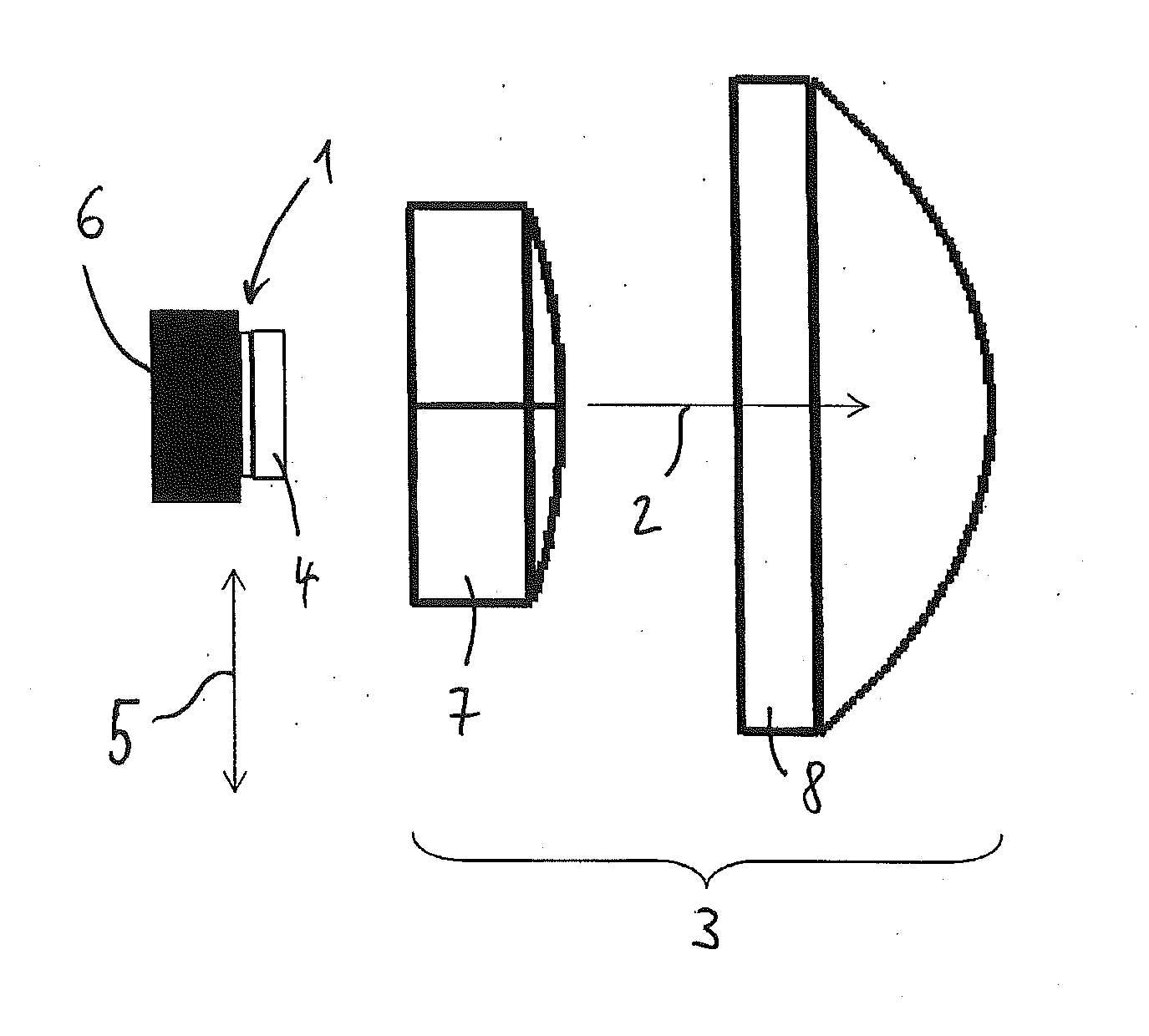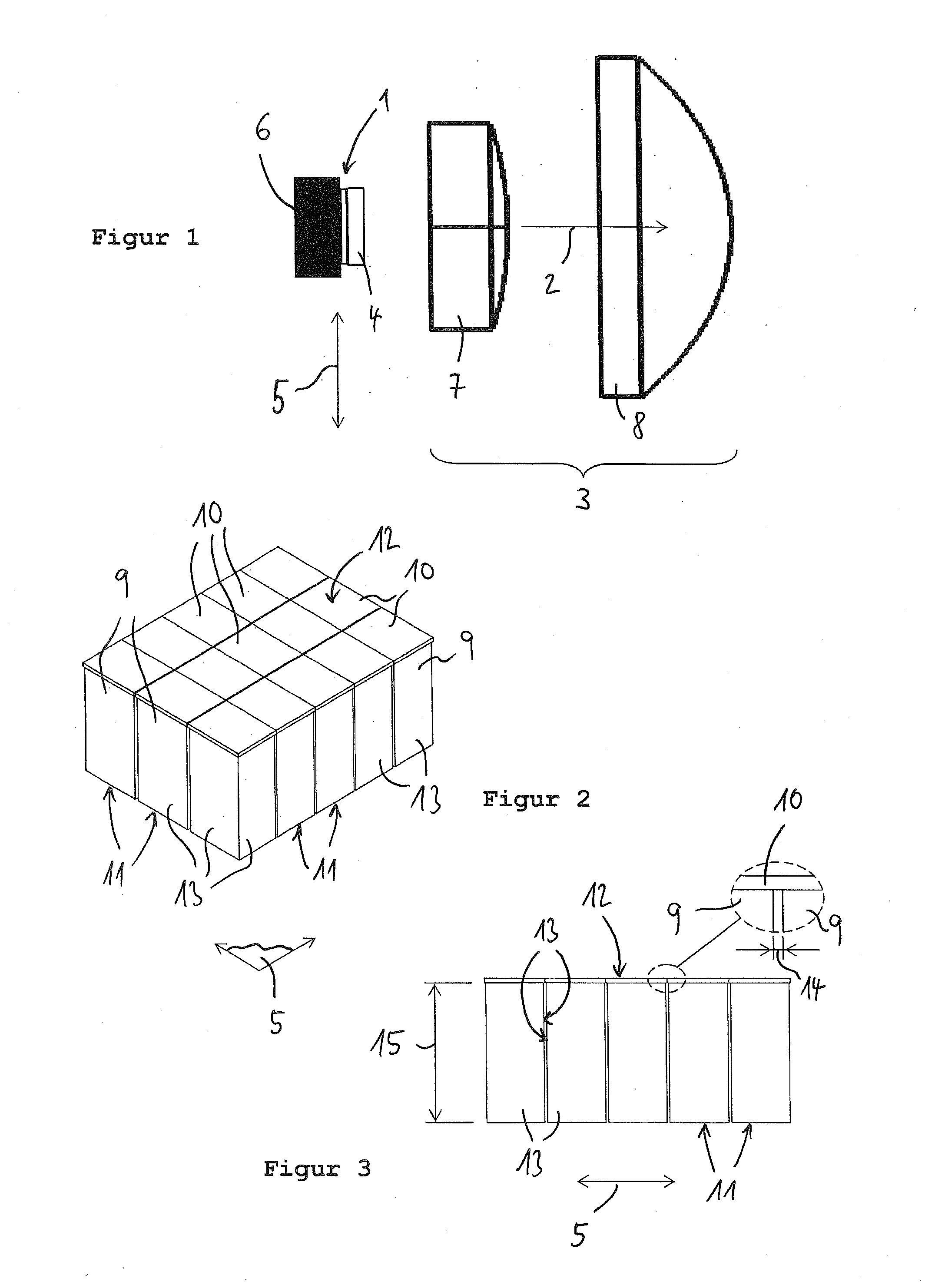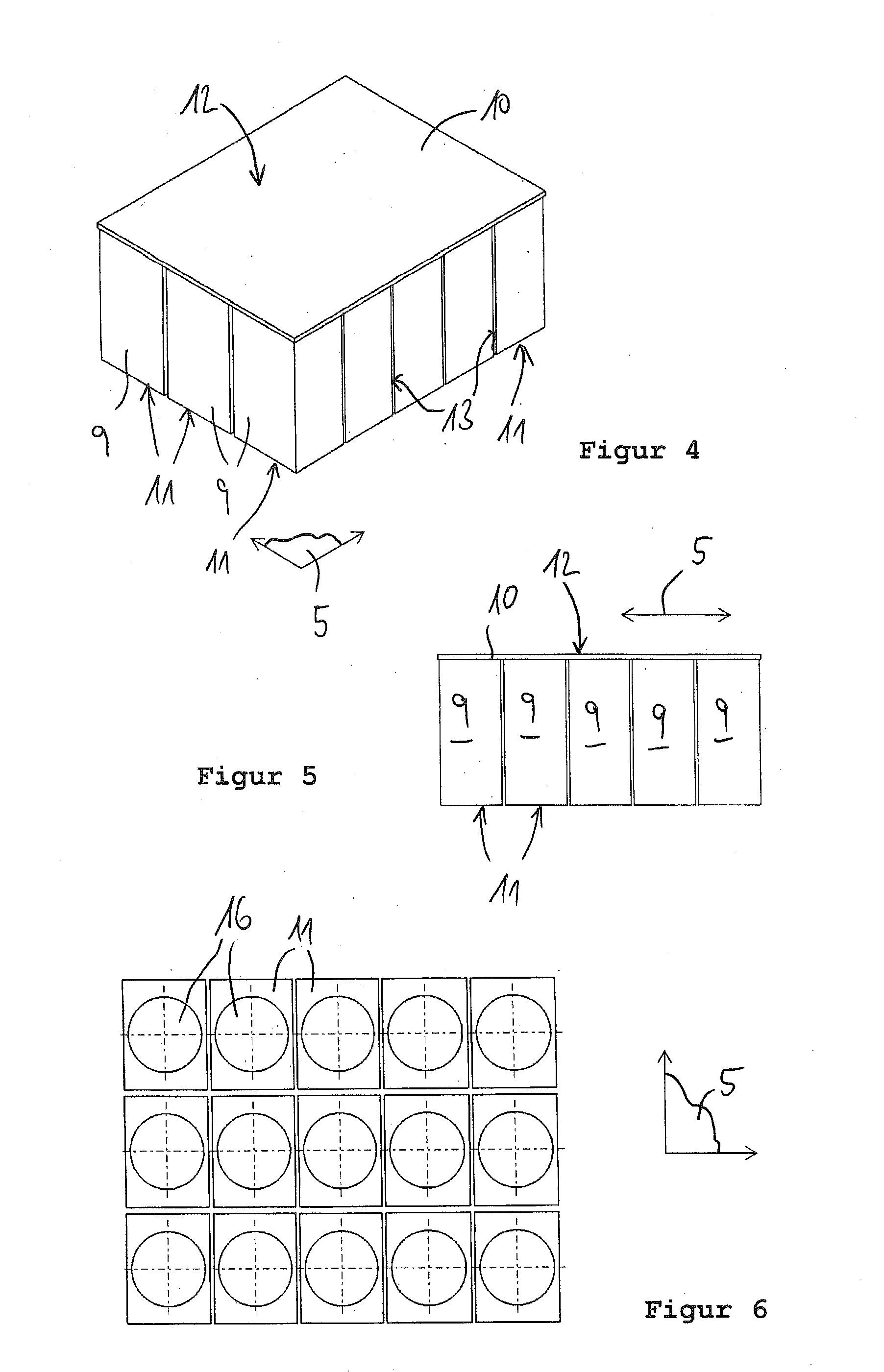Lighting device
a technology of light source and light source, which is applied in the direction of vehicle headlamps, light and heating apparatus, transportation and packaging, etc., can solve the problems of low distance of light source arranged on a commonly switched carrier, the problem of affecting the uniformity of light source, and the failure to show an optimal distance in reference to each other, etc., to achieve convenient and cost-effective production, advantageous optic quality, and high homogeneity
- Summary
- Abstract
- Description
- Claims
- Application Information
AI Technical Summary
Benefits of technology
Problems solved by technology
Method used
Image
Examples
Embodiment Construction
[0023]In the following detailed description numerous specific details are set forth in order to provide a thorough understanding of the invention. However, it will be understood by those skilled in the art that the present invention may be practiced without these specific details. For example, the invention is not limited in scope to the particular type of industry application depicted in the figures. In other instances, well-known methods, procedures, and components have not been described in detail so as not to obscure the present invention.
[0024]A lighting device according to FIG. 1 comprises a plurality of light sources 1, a light forming optic unit 3 located in front of the light sources 1 in a primary direction of emission 2 of the lighting device, as well as a widening optic unit 4 arranged between the light forming optic unit 3 and the light sources 1. The lighting device serves as the headlights of vehicles, for example. In particular it may be used to form controllable hig...
PUM
 Login to View More
Login to View More Abstract
Description
Claims
Application Information
 Login to View More
Login to View More - R&D
- Intellectual Property
- Life Sciences
- Materials
- Tech Scout
- Unparalleled Data Quality
- Higher Quality Content
- 60% Fewer Hallucinations
Browse by: Latest US Patents, China's latest patents, Technical Efficacy Thesaurus, Application Domain, Technology Topic, Popular Technical Reports.
© 2025 PatSnap. All rights reserved.Legal|Privacy policy|Modern Slavery Act Transparency Statement|Sitemap|About US| Contact US: help@patsnap.com



